Have you ever dreamt of finding an oasis in the middle of a desert? With green vegetation , hidden waterfalls, and an abundance of wildlife—all surrounded by a the judean desert. That’s exactly what you’ll discover at Ein Gedi Nature Reserve, one of Israel’s most stunning natural wonders. Ein Gedi is a hidden gem for nature lovers, hikers, even history buffs .
Top Attractions in Ein Gedi Nature Reserve
David’s Waterfall– מפל דוד

If you visit Ein Gedi, seeing David’s Waterfall is an absolute must. This iconic waterfall, cascading down rugged desert rocks, is one of the most photographed spots in the reserve. It’s not just about the scenic view—the cool mist from the waterfall is a refreshing reward after a hot hike. The area around David’s Waterfall is also rich with greenery, making it feel like you’ve stepped into a desert oasis.
Ein Gedi Springs– מעיינות עין גדי
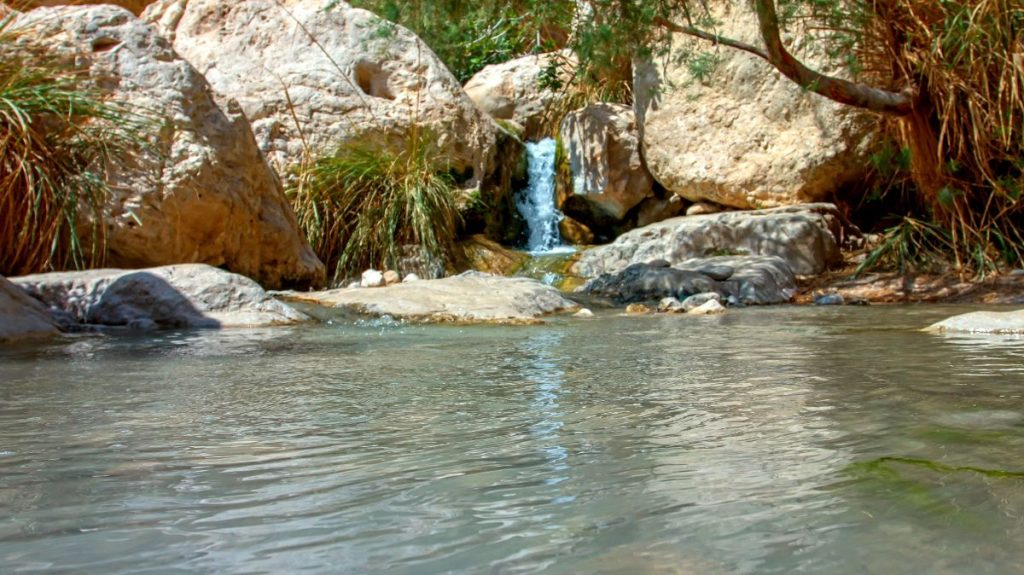
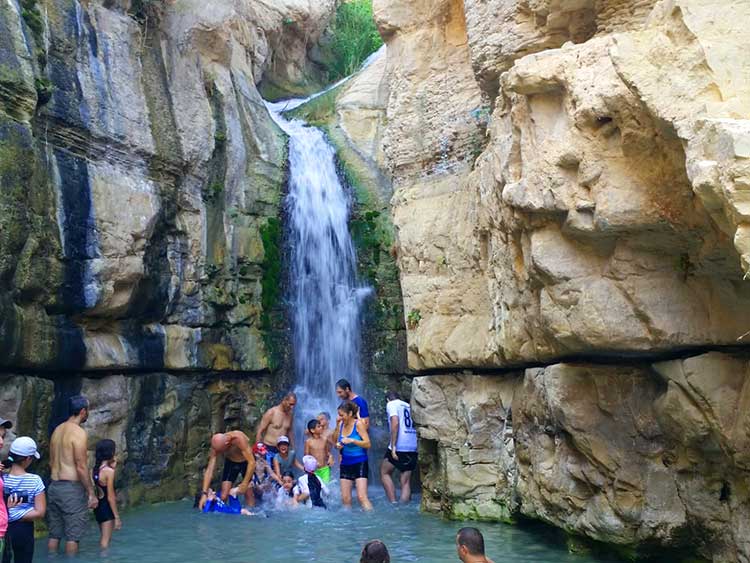
Known for its natural spring pools, the Ein Gedi Springs area is a favorite for visitors looking to cool off. You’ll find a series of small pools where you can relax and take in the stunning desert backdrop. These springs are fed by underground water sources. Bring a swimsuit and enjoy a refreshing dip—trust me, you’ll be glad you did!
The Ancient Synagogue
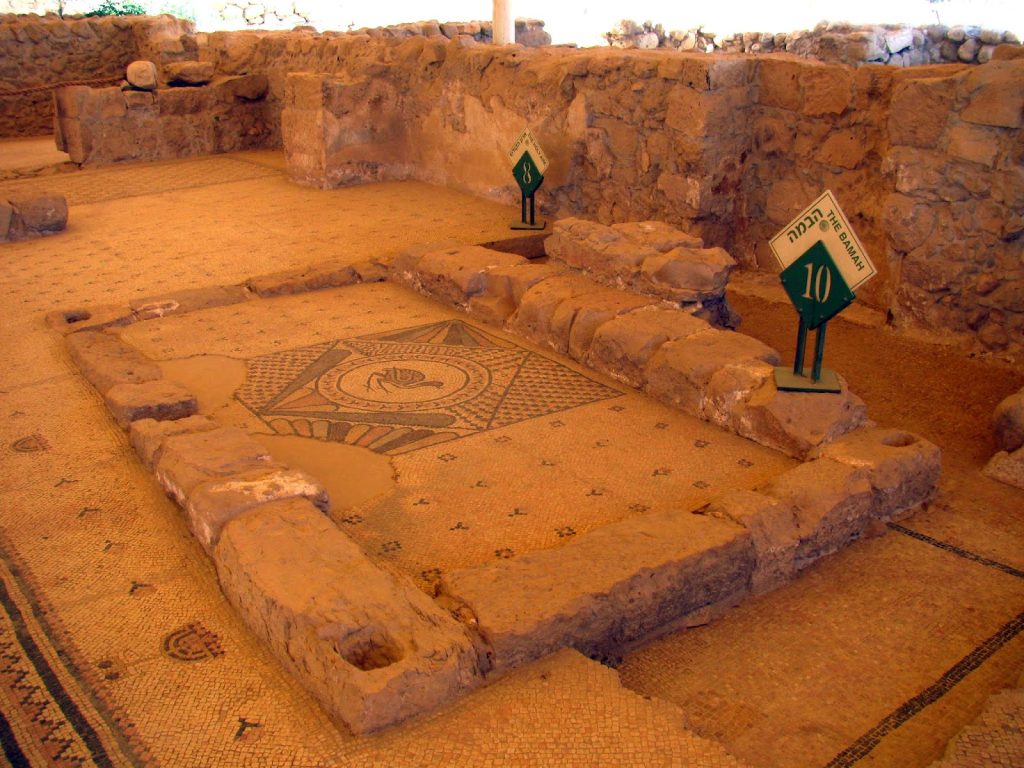
For history enthusiasts, the Ancient Synagogue in Ein Gedi offers a fascinating glimpse into the past. This archaeological site dates back to the Byzantine period, featuring beautiful mosaic floors and inscriptions.
Nahal Arugot– נחל ערוגות
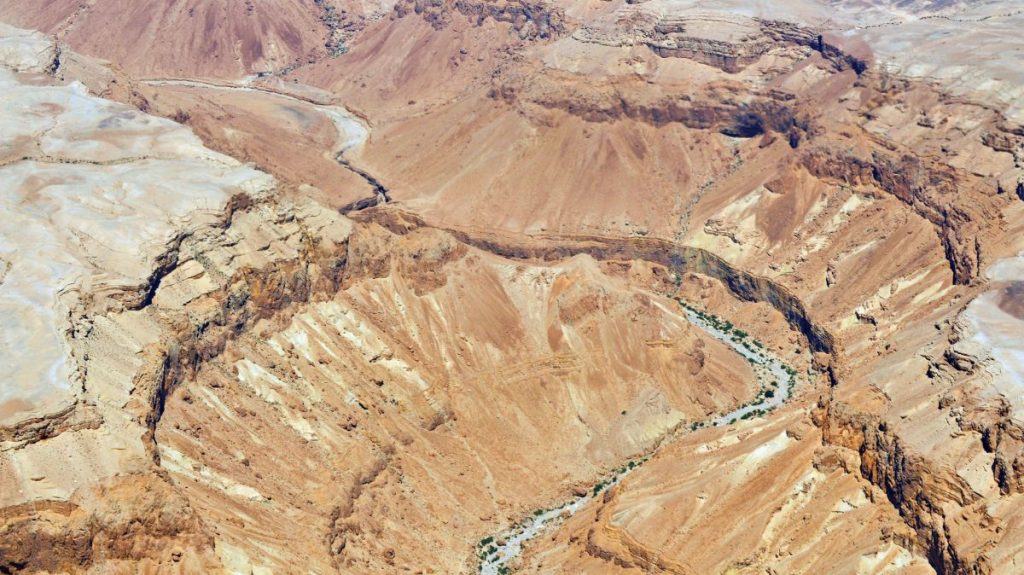
A less crowded but equally stunning alternative to Nahal David, the Nahal Arugot trail offers hidden pools and vegetation. This trail is ideal for those who want to experience the beauty of Ein Gedi without the crowds. The route follows a riverbed and leads to serene, secluded spots that are perfect for a quiet picnic or a moment of solitude.
Wildlife and Plant Life in Ein Gedi

Ein Gedi’s unique location supports a diverse range of flora and fauna, making it a paradise for nature lovers. You’ll encounter rare desert plants, such as acacia trees, wildflowers, and even some tropical varieties. The greenery thrives thanks to the reserve’s natural springs.

As for wildlife, keep your eyes peeled for the friendly Nubian ibex, often seen effortlessly climbing the rocky terrain. Rock hyraxes—small, furry mammals that resemble oversized guinea pigs—are also commonly spotted sunbathing on boulders. The reserve is a haven for bird watchers, too, with various species of migratory birds frequently passing through.
Best Hiking Trails in Ein Gedi
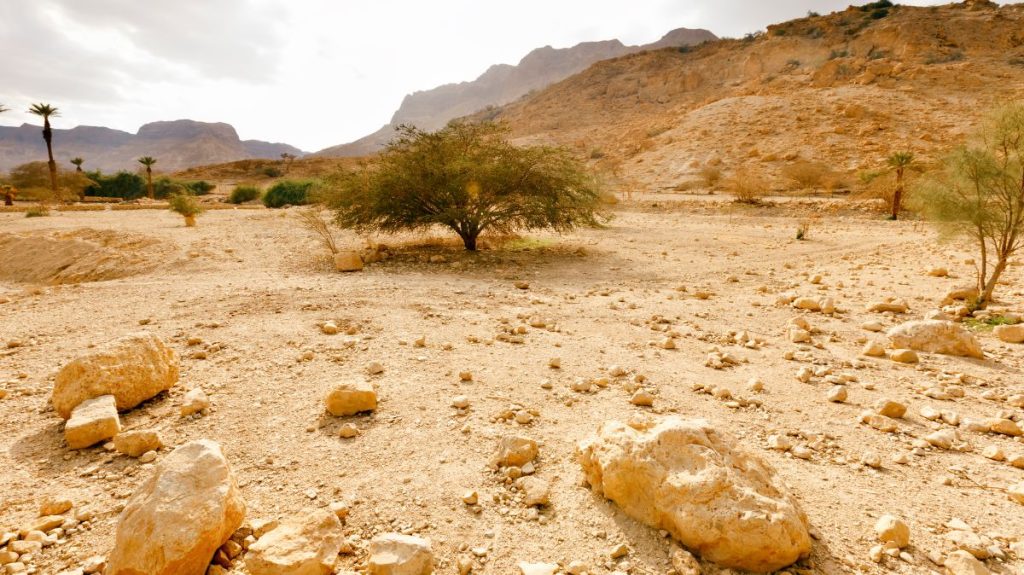
Whether you’re a seasoned hiker or just looking for a scenic stroll, Ein Gedi has a trail for you.
- Nahal David Trail: This family-friendly path is perfect for beginners or those short on time. It’s a relatively easy hike, leading you past lush greenery and offering a spectacular view of David’s Waterfall.
- Ein Gedi Upper Trail: For a bit more of a challenge, the Upper Trail takes you higher up the reserve, providing panoramic views of the Dead Sea and the desert cliffs. The scenery is breathtaking, especially at sunrise or sunset.
- Mount Yishai Trail: If you’re up for a more adventurous trek, the Mount Yishai trail takes you to higher elevations, with a stunning lookout over the surrounding area. It’s a tougher climb, but the sweeping views of the Dead Sea and desert are worth the effort.
What is the origin of the name Ein Gedi?
The name “Ein Gedi” (עֵין גֶּדִי) is Hebrew, and it means “spring of the young goat” . It combines “Ein” (עֵין), meaning “spring” or “fountain,” and “Gedi” (גֶּדִי), meaning “young goat”. This name reflects the area’s natural features: it is home to a perennial spring and rugged terrain where ibex (wild goats) are commonly found. The name highlights the abundance of water and wildlife, especially ibex, which have been a characteristic sight in the region since ancient times.
Ein Gedi is mentioned several times in the Bible. For example, it appears in the story of King David, who sought refuge there while fleeing from King Saul (1 Samuel 24:1).
Practical Tips for Visiting Ein Gedi
- Best Time to Visit: The ideal time to explore Ein Gedi is from October to April when temperatures are cooler, making hikes more comfortable.
- What to Pack: Lightweight clothing, a swimsuit, sturdy hiking shoes, a hat, sunscreen, and lots of water. A picnic blanket can be a nice addition if you plan to relax by one of the pools.
- Entry Fees and Accessibility: There’s a small entrance fee to the reserve, which goes toward maintaining the area. The main trails are accessible, but some areas can be steep or rocky, so wear appropriate footwear. Check the official site for current pricing
Nearby Attractions Worth Exploring
If you’re making the trip to Ein Gedi, why not explore a few nearby attractions?
- The Dead Sea: Just a short drive away, the Dead Sea is famous for its salty waters that allow you to float effortlessly. It’s the perfect way to unwind after a day of hiking.
- Masada Fortress: This ancient fortress sits atop a rock plateau overlooking the Dead Sea. A popular hiking or cable car destination, it offers incredible historical insights and panoramic views.
- Ein Bokek Beach: A great spot to relax by the Dead Sea, Ein Bokek Beach offers public facilities and a stunning view, making it a favorite among tourists.
Add Ein Gedi to Your Israel’s Travel List
Ein Gedi Nature Reserve is more than just a stop on a tourist map—it’s a chance to experience the raw beauty and unique ecosystems of the Judean Desert. So, pack your hiking shoes, your camera, and a spirit of adventure—the oasis of Ein Gedi is waiting to be explored.
